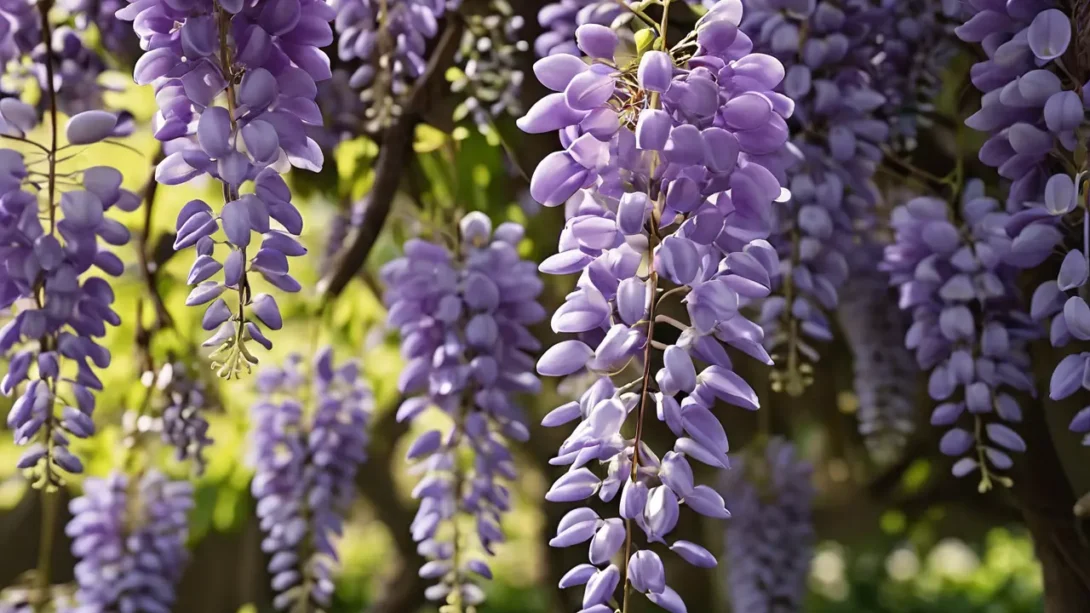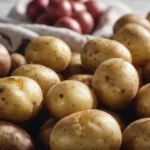Wisteria, with its cascading clusters of fragrant flowers, is a sight to behold in any garden. These fast-growing vines are celebrated for their stunning displays of purple, pink, and white blooms, often covering pergolas, walls, and fences with their enchanting drapery. Despite its widespread use in landscaping for aesthetic purposes, there arises a critical inquiry into the edibility of wisteria. Misconceptions abound, partly due to its alluring appearance and partly due to a lack of knowledge about its potential toxicity. This article aims to demystify the question of wisteria’s edibility, providing a detailed examination of its components and their effects on humans and animals.
Wisteria
Wisteria encompasses several species, the most common being Wisteria sinensis (Chinese wisteria) and Wisteria floribunda (Japanese wisteria). These plants are not only admired for their beauty but also hold significant historical and cultural roles in various countries, especially in East Asia, where they symbolize love and the coming of spring. Despite their positive associations, the question of their edibility casts a shadow over their ornamental value, necessitating a closer look at their botanical composition and the implications for consumption.
Toxicity of Wisteria
The crux of the matter lies in wisteria’s toxicity, which is primarily concentrated in its seeds and pods. These parts of the plant contain glycosides—compounds that, when ingested, can metabolize into toxins capable of causing serious health issues. Symptoms of wisteria poisoning can range from mild to severe, including nausea, vomiting, stomach pain, diarrhea, and in extreme cases, respiratory failure. The risk is not limited to humans; animals, particularly pets who may be tempted to chew on the plant, are also susceptible to its toxic effects.
Edible Parts of Wisteria
Venturing deeper into the discussion of wisteria’s edibility, it’s essential to clarify that while the plant is largely considered toxic, there are historical accounts and cultural practices suggesting limited edible uses of certain parts of the wisteria plant. It is crucial, however, to approach this topic with caution. Some sources mention that the flowers of wisteria, specifically when picked fresh and young, may be used in small quantities for culinary purposes, such as making teas or infusing vinegars, provided they are thoroughly cleaned and prepared to minimize risk. This practice is not widespread and should be approached with caution, acknowledging the potential risks and the importance of proper identification and preparation to avoid consuming toxic parts.
Medical and Herbal Uses of Wisteria
Beyond the realm of culinary experimentation, wisteria has found a place in traditional herbal medicine in certain cultures. It has been used in small, controlled doses to treat various ailments, ranging from skin diseases to rheumatoid arthritis. However, such uses are based on traditional knowledge rather than scientific evidence, and the therapeutic claims associated with wisteria have not been substantiated by modern medical research. The line between medicinal use and toxicity is thin, emphasizing the need for caution and further scientific study to understand the potential health benefits and risks fully.
Safety Precautions and Recommendations
Given the toxic nature of most parts of the wisteria plant, especially the seeds and pods, it is paramount for gardeners and homeowners to exercise caution. Families with small children or pets should be particularly vigilant, as these groups are more likely to ingest plant material accidentally. The following guidelines can help minimize the risk of wisteria poisoning:
- Educate all household members about the dangers of ingesting wisteria, especially the seeds and pods.
- Consider planting wisteria in areas that are less accessible to children and pets, or opt for alternative, non-toxic plants if safety is a concern.
- Regularly remove fallen seeds and pods from the ground to reduce the risk of accidental ingestion.
- If handling the plant for pruning or maintenance, wearing gloves can prevent skin irritation and reduce the temptation to touch or rub the eyes, which could transfer toxic substances.
The intriguing question of wisteria’s edibility brings to light the broader issue of plant toxicity and the importance of informed gardening and plant consumption practices. While the allure of using wisteria in culinary or medicinal contexts may appeal to some, the emphasis must always be on safety and the responsible use of plants in our surroundings.
Conclusion
The enchanting beauty of wisteria vines, with their cascading blooms, has captivated gardeners and nature lovers for centuries. However, the exploration into the edibility of wisteria reveals a complex picture marked by caution and a deep respect for the plant’s toxic potential. While there are intriguing hints at certain parts of the plant being utilized in culinary and medicinal contexts, such practices require a nuanced understanding of wisteria’s botanical makeup and a meticulous approach to preparation and consumption.
The primary takeaway from this discussion is the affirmation of wisteria’s toxicity, especially concerning its seeds and pods, which pose significant health risks if ingested. This knowledge serves as a crucial reminder of the importance of educating oneself and others about the plants we choose to grow and interact with in our gardens and homes. Safety should always be the paramount concern, particularly in environments shared with children and pets, who are most vulnerable to accidental poisoning.
For those intrigued by the potential edible uses of wisteria flowers, it’s vital to proceed with an abundance of caution, prioritizing thorough research and, ideally, guidance from botanical experts or toxicologists. The line between what may be traditionally considered edible and what is safe can be thin and fraught with risk. As such, the allure of experimenting with wisteria in the kitchen should be weighed carefully against the potential dangers.
In sum, while wisteria remains a beloved ornamental plant, its role in the culinary and medicinal world is limited and fraught with significant cautionary advice. Appreciating wisteria for its aesthetic contribution to gardens and landscapes, rather than as a source of food or medicine, allows us to enjoy its beauty safely. The fascination with wisteria’s edibility underscores a broader curiosity about the natural world, reminding us of the importance of respectful, informed interaction with the plants that share our spaces. By prioritizing knowledge and safety, we can continue to cultivate wisteria and other plants in a way that enriches our gardens and our lives, without compromising our well-being.




